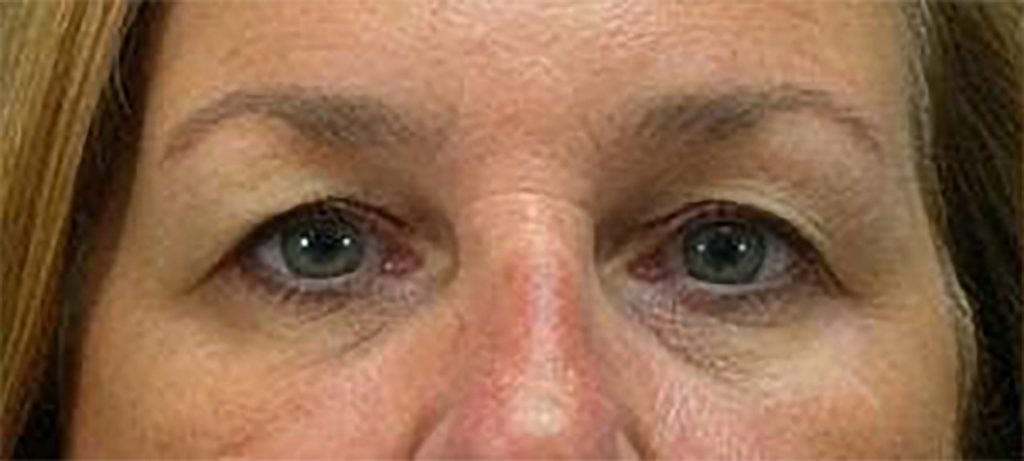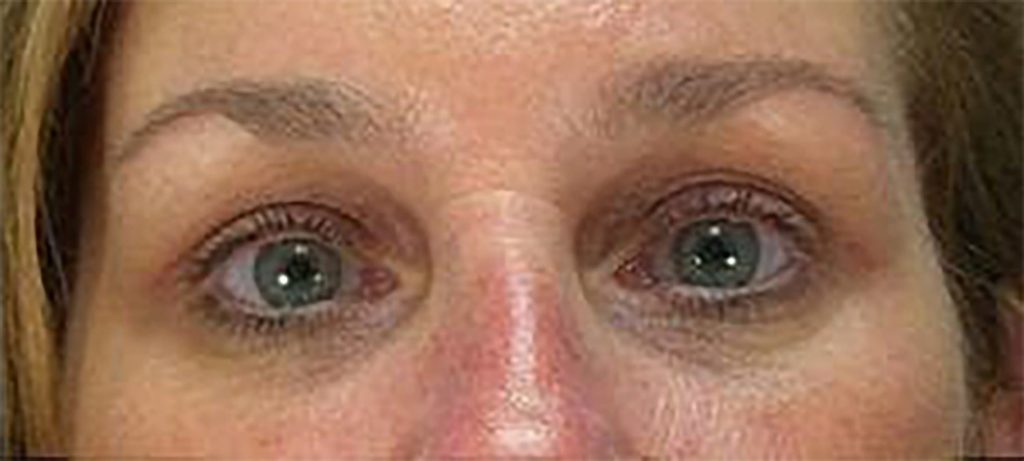A blepharoplasty, or eyelid surgery, is a procedure that removes excess skin, muscle, and/or fat from the eyelids.
There are both cosmetic and functional reasons to have this surgery.
A frequently asked question from patients is, “When is a blepharoplasty a medically necessary procedure?”
The first aspect to consider is the motivation for seeking surgical consultation. If the motivation is for cosmetic purposes, then the surgery is likely not medically necessary.
If you are investigating surgery because you are having vision issues, then there is a possibility that this is a medically necessary procedure, and it may be covered by insurance.
What Deems a Blepharoplasty Surgery Medically Necessary?
Typically, an upper-eyelid blepharoplasty can be considered medically necessary when the upper-eyelid skin is drooping down to the extent that it is blocking vision, usually within the superior visual fields.
When there is significant excess upper-eyelid skin, the skin can hang down and create a curtain-like effect on vision when looking upwards.
There are other conditions that can make the upper eyelid hang down over the eye and contribute to vision loss as well.
This is a result of weakness of the small muscle that is responsible for lifting the upper eyelid. This condition is called upper-eyelid ptosis. There are separate surgeries that can be performed at the same time as an upper eyelid blepharoplasty to help raise the eyelid and alleviate vision obstruction.
How is Medical Necessity Determined for this Procedure?
If patients are having problems with superior visual field obstruction and a physical exam shows a significant amount of excess upper-eyelid skin contributing to vision loss, patients are typically referred to visual field testing.
This is performed by an eye doctor and involves testing when a patient is able to see a signal in their peripheral vision when focusing on an object straight ahead. The eyelids can be temporarily taped upwards to demonstrate that a surgical correction would significantly improve their vision.
What Should People Do About ‘Heavy Brows’?
Another important problem area to consider giving attention to during a blepharoplasty, especially with the upper eyelids, is the brows.
Some patients have “heavy brows” or “brow ptosis,” which can also result in excess upper-eyelid skin.
When performing surgery, there is only so much upper eyelid skin that can be removed without further displacing the brow downwards, therefore sometimes a browlift is considered a medically necessary procedure.
On the other hand, there are many patients that seek a browlift for cosmetic purposes to help alleviate the appearance of a heavy brow. This is important for patients to be aware of because this surgery involves completely different incisions located within the hairline to suspend the eyebrow skin.
It is very common for a browlift and upper eyelid blepharoplasty to be performed concurrently, for both cosmetic and functional purposes.
Before a blepharoplasty:
After a blepharoplasty:
When is Surgery for the Lower Eyelids Medically Necessary?
A lower eyelid blepharoplasty is rarely covered by insurance. This is due to the fact that, regardless of the amount of excess lower-eyelid skin or fat herniation, it will not obstruct vision.
There are certainly indications for a lower-eyelid surgery to be performed to help protect the eye. However, it rarely results in the removal of excess lower eyelid skin or removal of the fat pads, or “bags,” as well as be covered by insurance for medically necessary purposes.
How Do I Determine if My Surgery is Covered by Insurance?
The best way to determine if the cost of eyelid surgery is covered by health insurance is to ask yourself the motivations for surgery.
If it is to improve your appearance, insurance is unlikely to cover this procedure.
If you are affected by loss of vision in your superior visual fields, then there is a possibility that insurance will cover the procedure and you will require further testing to document obstruction of your visual fields.
It is important to meet with an experienced surgeon because there are components of the physical exam that may be missed by a surgeon that does not frequently perform eyelid surgery.
At The Williams Center, we are able to take care of both cosmetic and functional upper-eyelid surgeries. Having performed thousands of these surgeries, we are experienced and able to identify subtle contributions to eyelid issues, such as a heavy brow and/or a weak upper-eyelid levator muscle.
Please contact us today to arrange a consultation to determine both your functional and cosmetic surgical options.


